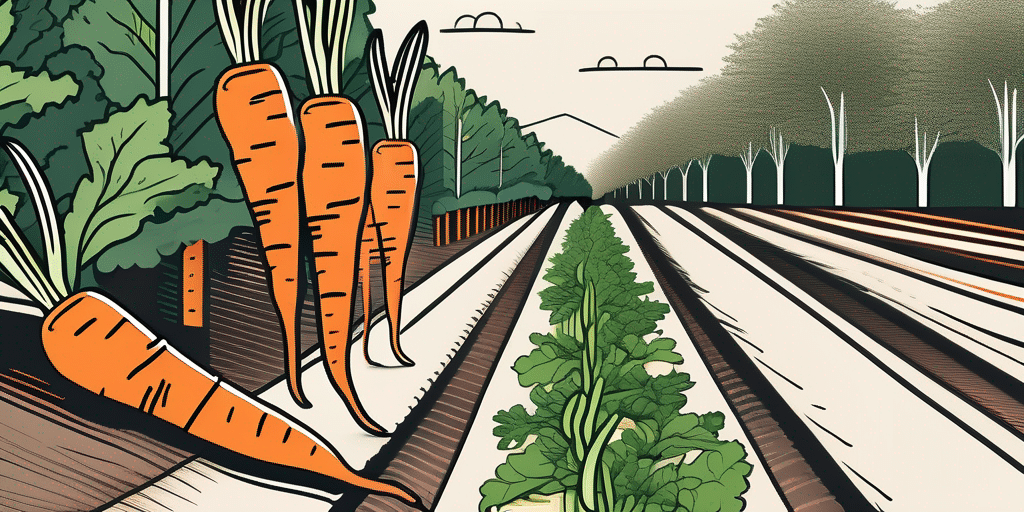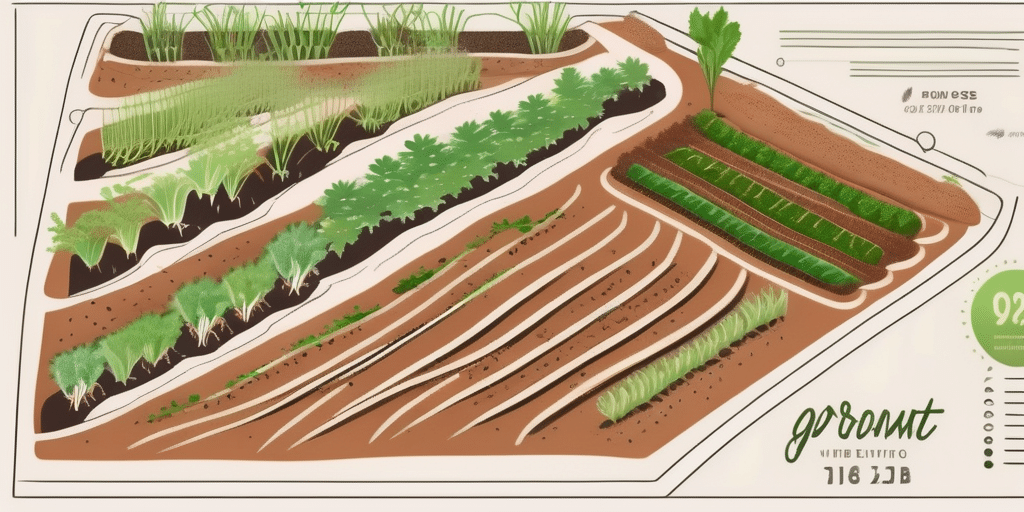Carrots are a popular and versatile vegetable that can be grown in many different climates and regions, including Arkansas. If you’re interested in growing Napoli carrots in this region, you’ve come to the right place! In this article, we’ll discuss when to plant Napoli carrots in Arkansas and how to grow them successfully. Let’s dig in!
Climate & Hardiness Zones in Arkansas
Before we start with the planting and growing process, it’s important to understand the climate and hardiness zones in Arkansas. The state experiences a humid subtropical climate, with hot summers and mild winters. The USDA hardiness zones range from 6a in the north to 8b in the south. This information is crucial because it helps determine the best time to plant and harvest Napoli carrots in Arkansas.
Arkansas, known as “The Natural State,” boasts a diverse landscape that includes mountains, valleys, plains, and forests. This varied terrain contributes to microclimates within the state, influencing local weather patterns and growing conditions for different crops. For example, the Ozark Mountains in the northwestern part of Arkansas experience cooler temperatures compared to the flat plains of the Mississippi Alluvial Plain in the east.
Furthermore, the Arkansas climate is also influenced by its proximity to the Gulf of Mexico, which brings warm, moist air currents that can lead to sudden thunderstorms and heavy rainfall, particularly during the spring and early summer months. These weather patterns play a significant role in determining the success of crops like Napoli carrots, as excessive rainfall can impact soil drainage and nutrient availability, affecting the overall growth and yield of the vegetables.
When to Plant Napoli Carrots in Arkansas
Timing is everything when it comes to planting Napoli carrots in Arkansas. The ideal time to sow the seeds is in early spring, around mid-March to mid-April, when the soil temperature reaches around 45°F (7°C). However, you can also sow a second crop in late summer, around mid-July to early August, for a fall harvest.
It’s important to keep in mind that carrots prefer cool weather for germination and growth, so planting in the hottest months of summer is not recommended. If you’re unsure about the soil temperature, you can use a soil thermometer to confirm.
Arkansas, known for its diverse climate, offers a unique opportunity for carrot enthusiasts. With its varying landscapes and microclimates, the Natural State provides a range of conditions suitable for growing Napoli carrots. Whether you reside in the Ozark Mountains or the Mississippi Delta, there’s a perfect spot waiting for your carrot bed.
Now, let’s dive into a step-by-step guide to ensure your Napoli carrots thrive in the Arkansas soil:
Step-by-step Guide: Planting Napoli Carrots
- Select a suitable location for your carrot bed. Choose a spot that receives full sun and has well-draining soil. A south-facing slope can provide optimal sunlight exposure, while raised beds can enhance drainage.
- Prepare the soil by removing any weeds, rocks, or other debris. Carrots prefer loose, friable soil, so consider adding organic matter, such as compost, to improve the soil’s texture and fertility. This will create a nutrient-rich environment for your carrots to flourish.
- Using a garden fork or a tiller, loosen the soil to a depth of at least 12 inches. This will allow the roots to penetrate easily and ensure proper growth. Take your time and work the soil gently, avoiding compaction.
- Sow the Napoli carrot seeds directly into the prepared soil. Aim for a seed spacing of about 2 inches apart and a depth of ¼ to ½ inch. Cover the seeds with a thin layer of soil and gently pat it down. Remember, these tiny seeds hold the potential for a bountiful harvest.
- Water the newly sown seeds thoroughly but gently, ensuring that the soil is evenly moist. Avoid overwatering, as it can lead to rotting or poor germination. A gentle misting with a watering can or a fine spray from a hose will do the trick.
- Keep the soil consistently moist during the germination period, which usually takes 7 to 14 days. Mist the soil lightly with water if it begins to dry out. As you patiently wait for the first signs of life, imagine the vibrant orange hues that will soon grace your garden.
- As the carrot seedlings emerge, thin them to a spacing of 2 to 4 inches apart. This will allow each plant enough space to develop a healthy root system. Gently remove the weaker seedlings, leaving behind the strongest contenders for a robust carrot crop.
By following these steps and paying attention to the unique characteristics of your Arkansas location, you’ll be well on your way to growing Napoli carrots that will impress both your taste buds and your gardening skills. Happy planting!
When to Harvest or Pick Napoli Carrots in Arkansas
Now that you’ve diligently planted your Napoli carrots, the next step is knowing when to harvest them. The average time from sowing to harvest is around 60 to 70 days, but this can vary depending on growing conditions and personal preferences.
When the carrots are ready to be harvested, their tops will have reached a diameter of about 1 inch, and the roots will be vibrant orange in color. Don’t let them grow too large, as they may become woody and lose their sweet flavor.
To harvest Napoli carrots, gently loosen the soil around the base of the carrot with a garden fork or trowel. Carefully lift the carrots out of the ground, grasping the foliage near the top and pulling upward. Trim off the tops, leaving about an inch of greenery attached. You can then wash and enjoy your freshly harvested Napoli carrots!
Tips for Successful Harvesting
- Harvest the carrots when the soil is dry to avoid clumping and facilitate easier handling.
- Be careful not to damage the roots while harvesting, as any injuries can reduce their quality and storage life.
- If you plan on storing the carrots, remove any excess soil but avoid washing them before storing. Washing can introduce moisture, which can lead to spoilage during storage.
- Store the harvested carrots in a cool, dark place, such as a root cellar or refrigerator, to prolong their freshness and flavor.
Frequently Asked Questions
Q: How long do Napoli carrots take to grow?
A: Napoli carrots typically take around 60 to 70 days from sowing to harvest. However, this can vary depending on factors such as weather conditions and cultivation practices.
Q: Can I grow Napoli carrots in containers?
A: Absolutely! Napoli carrots can be grown in containers as long as they have sufficient depth for the roots to develop. Choose a container that is at least 12 inches deep and has good drainage. Fill it with a well-draining potting mix and follow the same planting and care instructions as for in-ground cultivation.
Q: Are Napoli carrots suitable for succession planting?
A: Yes, Napoli carrots are well-suited for succession planting. By sowing a new batch of seeds every few weeks, you can ensure a continuous supply of fresh carrots throughout the growing season.
Q: How do I know if the soil is suitable for growing Napoli carrots?
A: Carrots thrive in loose, well-draining soil. You can perform a simple soil test by taking a handful of soil and squeezing it. If it forms a tight ball that doesn’t crumble easily, it indicates heavy, compacted soil that isn’t ideal for carrot cultivation. In such cases, consider amending the soil with organic matter to improve its structure.
Now that you’re armed with the knowledge of when to plant Napoli carrots in Arkansas and how to grow them successfully, it’s time to get your hands dirty! Have fun experimenting with these delightful root vegetables and enjoy the bountiful harvest they will bring. Happy gardening!
Join the How to Grow Everything Community
Ready to take your gardening to the next level? Subscribe for free to How to Grow Everything and learn how to build the garden of your dreams! Receive personalized gardening advice and information tailored to your Arkansas location, grow zone, experience level, and interests. No spam, just the best gardening tips and exclusive deals delivered straight to your inbox. It’s 100% free, from our family to yours. With thousands of free growing and gardening articles at your fingertips, you’ll be harvesting Napoli carrots and much more with ease. Subscribe now and join our growing community!






